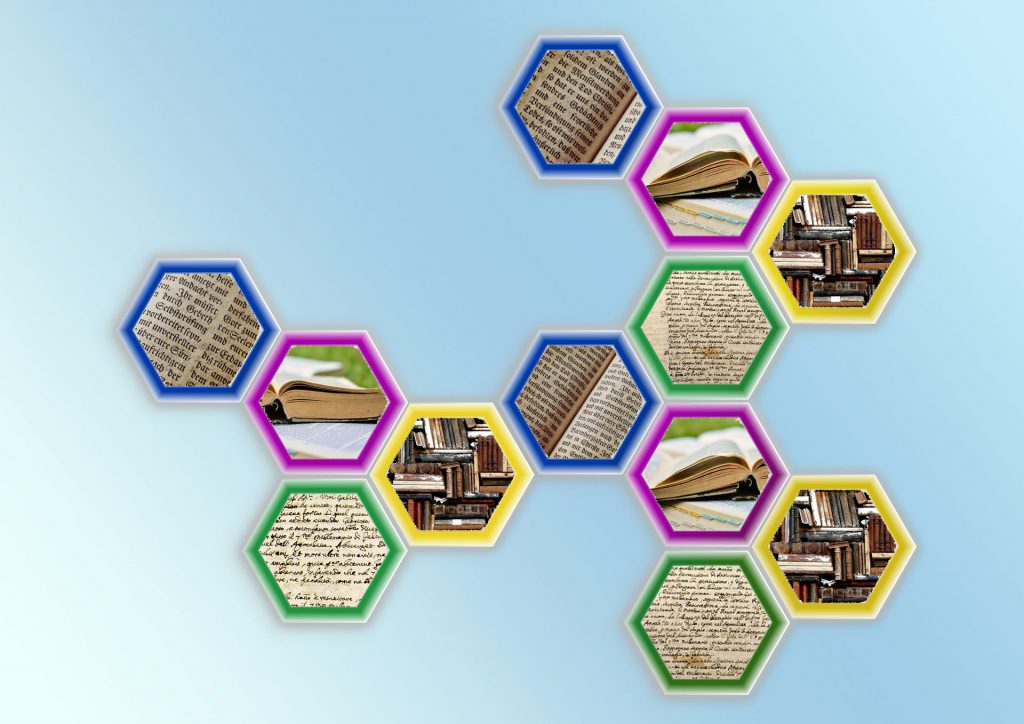
One major theme of this semester’s Hargrett Hours course is the intersection of scientific analysis and humanities research. The study of medieval manuscripts is a natural place to bring science into the literature classroom; when we want to learn more about the book as a physical thing, it makes sense to turn to fields of study that excel at understanding the material world. A major question we’ll be asking is what the scientific analysis of manuscripts is good for. What questions can we ask (and try to answer) through traditional literary or historical methods of inquiry, and what through the analysis of its physical features? What historical and art historical questions must we ask of a manuscript before we can profitably interrogate it with materials analysis equipment or multi-spectral photography? How can the data we collect through such analysis help us reformulate our literary-historical research plan? In short, how can these different approaches to understanding this object – an object that is simultaneously a physical book, a written text, and an artistic endeavor – deepen our understanding of that object? And how can these questions, in turn, help us better understand the strengths and limitations of these different methods of inquiry?
So here are a few examples.
For the study of ancient texts, multi-spectral imaging is a critical, non-invasive, non-destructive technology. Special cameras take photographs of the object under visible, infrared, and ultraviolet lights; the infrared and ultraviolet images can reveal erased, overwritten, faded, or otherwise damaged text that can’t be clearly seen under white light. The good people at the British Library’s Centre for Conservation have made some fantastic discoveries using multi-spectral imaging, such as revealing an erased figure in the notebooks of Leonardo da Vinci, exposing damaged text in one of the four original, 1215 copies of the Magna Carta,* and making visible an erased horoscope on a first-century BC papyrus.
My next example comes from the oldest continually operating library in the world: the library at Saint Catherine’s Monastery on the Sinai peninsula. That library holds a breathtaking array of ancient manuscripts, in many early Middle Eastern languages, including 160 palimpsests. Closed to the outside world until recently, the monastery has opened itself to select scholars to help interpret and preserve their holdings. Although the religious community at Saint Catherine’s has weathered the volatile Middle Eastern world for over 1700 years, recent political instability in the area is giving this collaboration new urgency. The monks of Saint Catherine’s are now working with scientists to take images of these palimpsests, under different kinds of light at different angles, using the next generation of imaging technology; algorithms then combine these images to make visible the erased words beneath the later overwriting. Not only is this project expanding our knowledge of lost Middle Eastern languages, it’s also offering new perspectives on Christian-Arab interaction in the early years, as different forms of Christianity were taking shape and Islam was coming into existence.
Finally, there’s DNA sampling. Like Billy Collins’s poem “Flock” reminds us, each manuscript preserves the skin of a herd of cattle or flock of sheep. Working together, manuscript conservationists and scientists have devised a noninvasive method for taking samples of parchment for DNA analysis. (You can watch a video of the process, as done at the Schoenberg Institute for Manuscript Studies at the Penn Library.) The DNA then provides a profile of the animals available at the place and time the manuscript was made. Are all these animals from the same herd (sharing some DNA because of breeding patterns)? Or are they coming from widely different herds? What does that tell us about the movement of live animals around Europe? How does the DNA of a medieval cow differ from that of its modern descendants? Additionally, this kind of DNA analysis can reveal the care with which some high-status manuscripts were made. For example, the twelfth-century Gospel of Luke mixed calf and sheep skin — and, surprisingly, goat. (They’re also collecting DNA samples from bookworms, because science is fun.)
https://www.youtube.com/watch?time_continue=135&v=-PSZstL8n-k
We’re not taking DNA samples or using multispectral photography in this class (maybe we will in the future!), and our goals are more modest than those of scientists gathering bacteria from 900-year-old manuscripts. Although our discoveries about the medieval pigments used on the Hargrett fragments will be important, more critical will be the skills we all learn from working with the Center for Applied Isotope Studies and the mental flexibility we’ll gain by moving from reading Gothic textualis to reading spectra.
If you’re reading this blog, you’re probably quite aware of the vocationalization of the university degree, and of the concomitant fear that humanities majors will be unprepared for highly skilled jobs after graduation. And you’re probably also aware of the backlash against that presupposition: articles that rightly argue that the US’s obsession with STEM education is dangerous, that a humanities background can help coders know “how to identify and interrogate privilege, power structures, structural inequality, and injustice” in their algorithms, and that demand for liberals arts majors will increase alongside the increasing automation of technology and production “because you need a different perspective to have a different view of the data.”
All this is true. But it’s also true that it’s not the job of STEM alone to wake up and embrace English majors; we humanities types too can become conversant with the priorities, methodologies, and intellectual approaches of STEM fields. The written conventions of scientific reports. How statistics work. The principles underlying computer code. How to gather and manage data. How to turn raw data into usable information. We don’t have to major in engineering or take O-Chem to have a profitable, meaningful exchange with departments on South Campus. We just need to be willing to learn from them, as they are hopefully equally willing to learn from us. Because that’s really what a liberal arts education should be about.
*Which I saw in person two summers ago. Yes, my job is pretty awesome.